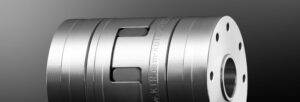 The following is a list of frequently asked coupling questions provided by KTR. Here, we can see some of the best ways to handle the basic coupling-related application questions engineers ask most.
The following is a list of frequently asked coupling questions provided by KTR. Here, we can see some of the best ways to handle the basic coupling-related application questions engineers ask most.
1. Which data do I require for selecting a coupling?
It’s important to know from customer details about the kind of application, the torque to be transmitted and the shaft diameters to be connected. Please also advise specific ambient conditions such as temperatures or contact with aggressive media. We will be pleased to provide you with questionnaires we have prepared. For that purpose please contact our application consultants.
2. Is it possible to select a coupling based on bore diameters?
We strongly recommend NOT to do so. For an optimum selection of a coupling other parameters are decisive, see question No. 1. The only exception to the rule are applications on shaft encoders. In this case, the couplings are selected according to shaft diameters. Suitable for such applications are our miniature couplings COUNTEX, ROTEX GS and TOOLFLEX.
3. How do ROTEX and ROTEX GS couplings differ in their function?
The only difference is ROTEX GS jaw couplings have zero-backlash. They are used on such applications that require positioning of drives.
4. How can I recognize if a ROTEX or ROTEX GS spider is laying in front of me?
There are two visual features in which the spiders differ from each other: On the one hand, the ROTEX GS spider has a straight tooth from a radial view, while the ROTEX spider has a crowned shape. On the other hand, the ROTEX GS spider has a web on the inside diameter (illustration on the left: ROTEX GS spider, illustration on the right: ROTEX spider).
5. My coupling hub looks like the one in the illustration shown in the company catalog, but it has a different number of jaws. Can I order it like that?
The number of jaws depends on the coupling size. The products shown in the catalog are only a part of our portfolio. That is why it is possible that the number of your jaws differs from that presented in the catalog.
6. Does the bore diameter of the clamping hub have to have the same size as the shaft diameter?
Yes, it does. The clamping hubs are able to compensate for differences in diameter within the tolerance range, but the nominal size should be the same.
7. Does the bore diameter of the clamping ring hub have to have the same size as the shaft diameter?
Yes, it does. The clamping ring hubs are able to compensate for differences in diameter within the tolerance range, but the nominal size should be the same. If your shaft tolerance deviates from the shaft tolerance specified in the catalog, please speak with our application consultants.
8. Which shaft tolerances does KTR recommend?
The shaft-hub-connection basically has to be reviewed by the customer! With frictional connections, please observe the transmittable friction torques specified in our assembly instructions and catalogs.
KTR
ktr.com
Leave a Reply